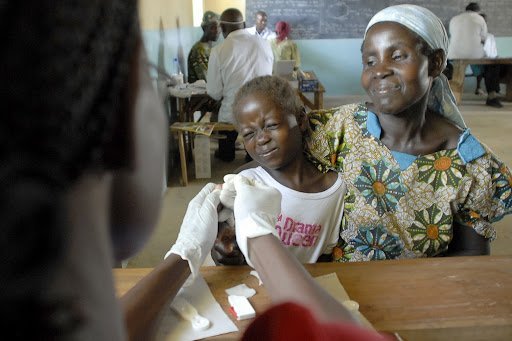Defeating Malaria: An Ongoing Effort
Anopheles gambiae mosquito being injected with hemolymph for malaria research study Photo: Amanda Grennell / NIAID
Malaria remains the sixth leading cause of death among low-income countries, killing over 627,000 people globally– despite being preventable and curable. However, the past two decades have seen a dramatic decrease in malaria-related mortality. Since 2000, global malaria deaths dropped from 896,000 to 558,000 in 2019. The steady decline can be attributed to a host of interventions.
The most astounding decrease in malaria has been in six countries across the Mekong River basin — Cambodia, China, Laos, Myanmar, Thailand, and Vietnam. These countries saw a 76% decrease in malaria cases from 2010 to 2018, while malaria deaths dropped 95%. These decreases are the results of efforts from local governments, international coalitions, and non-government organizations.
For example, the Asia Pacific Malaria Elimination Network helped to implement the ‘1-3-7’ surveillance and response strategy, first in China and later across southeast Asia. This strategy set up protocols for investigating malaria that then allowed for health officials to take more calculated action.
In addition to malaria surveillance, Asian countries have succeeded at devising useful treatments for malaria. In 2015, the Nobel Prize for Medicine for Physiology was awarded to Chinese scientist Tu Youyou for her discoveries concerning a novel therapy against malaria in the 1970s. The creation and distribution of a variety of treatments for malaria in China and Vietnam lead to massive decreases in mortality – yet these treatments have had trouble making it outside of Asia.
Over the past few decades, it has been Chinese pharmaceutical innovations that have led to the artemisinin-based combination therapies (ACTs), which are now the standard, WHO-recommended treatments for the disease. A similar story followed with insecticide-soaked bed nets that became popular in China in the 1980s but took decades to be adopted by official WHO recommendations.
Even still, southeast Asian countries are not malaria free. Malaria remains is one of the leading causes of death among adolescent girls in southeast Asia, where the malaria mortality rate for young adolescent girls in southeast Asia is 28% higher than for young adolescent boys.
The current efforts to combat malaria have been concentrated in Africa. However, recent challenges have arisen due to coronavirus. Disruptions to the delivery of malaria services contributed to 14 million malaria cases and 69,000 deaths. Coronavirus-related shocks and the flatline in funding have created challenges in meeting the goals set out by WHO and the UN, creating doubts about the future of malaria prevention. Estimates suggest that funding towards malaria relief would need to triple to meet WHO goals.
U.S. Army medical researchers take part in World Malaria Day 2010 Photo: Rick Scavetta / U.S. Army Africa Public Affairs
Given the preventability and curability of malaria, the impact of malaria relief efforts is extremely strong compared to their cost. Estimates put the cost per life saved from malaria at just $4,500, among the lowest of any charitable cause without any additional improvement to malaria preventative technology.
Yet, additional improvements in the fight against malaria continue to be made. Importantly, the WHO officially recommended a malaria vaccine late 2021, and nearly a million children have already received the vaccine in Ghana, Malawi, and Kenya.
Although the world will not be malaria free for at least anotherfew decades, the progress against malaria in the past generation has contributed towards millions of lives saved and unprecedented increases to life expectancy among the poorest countries. This progress has not come without setbacks such as COVID-19 disruptions and funding woes but the future for malaria prevention remains promising.


